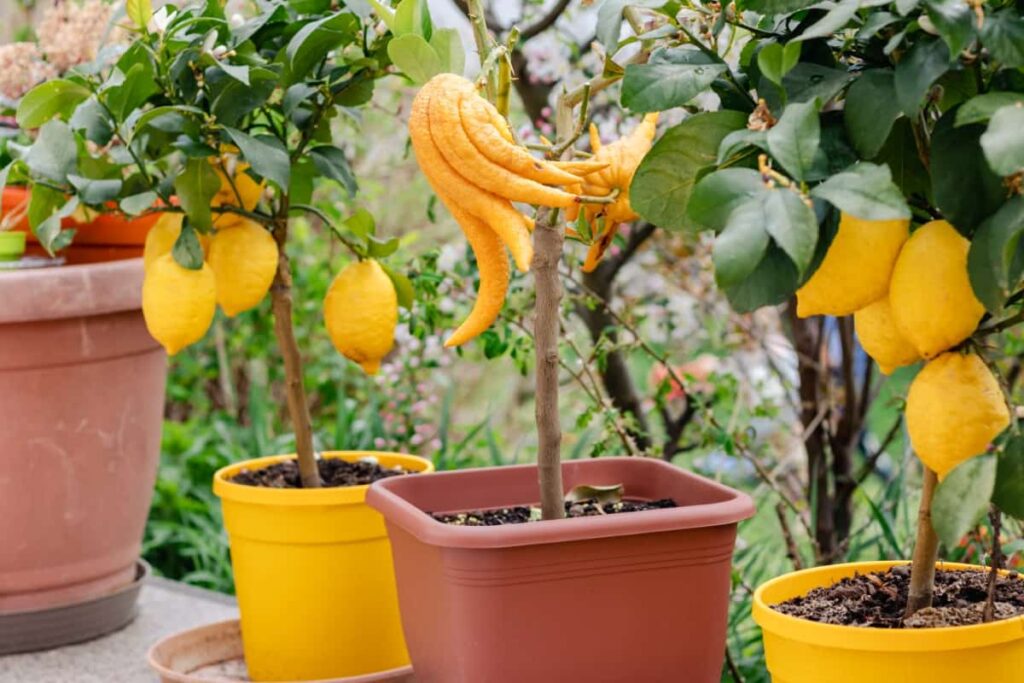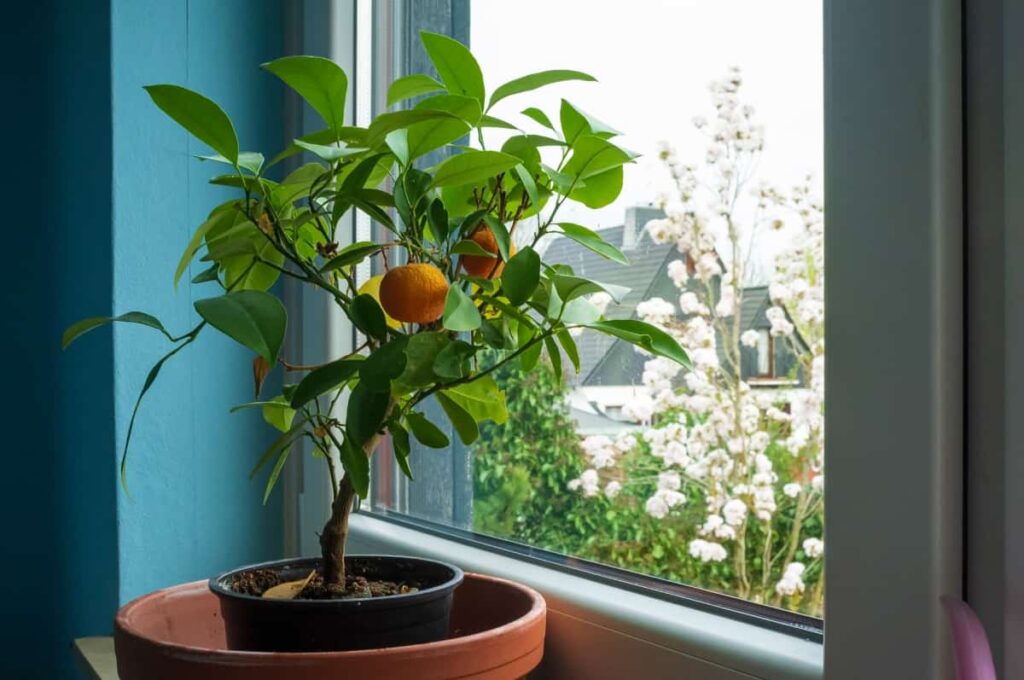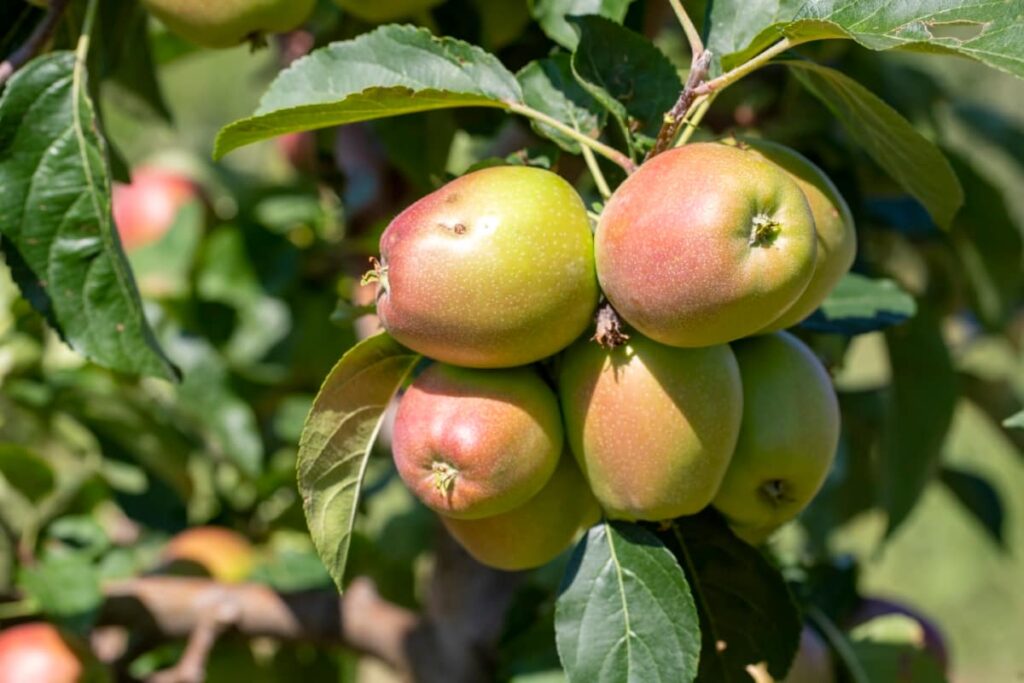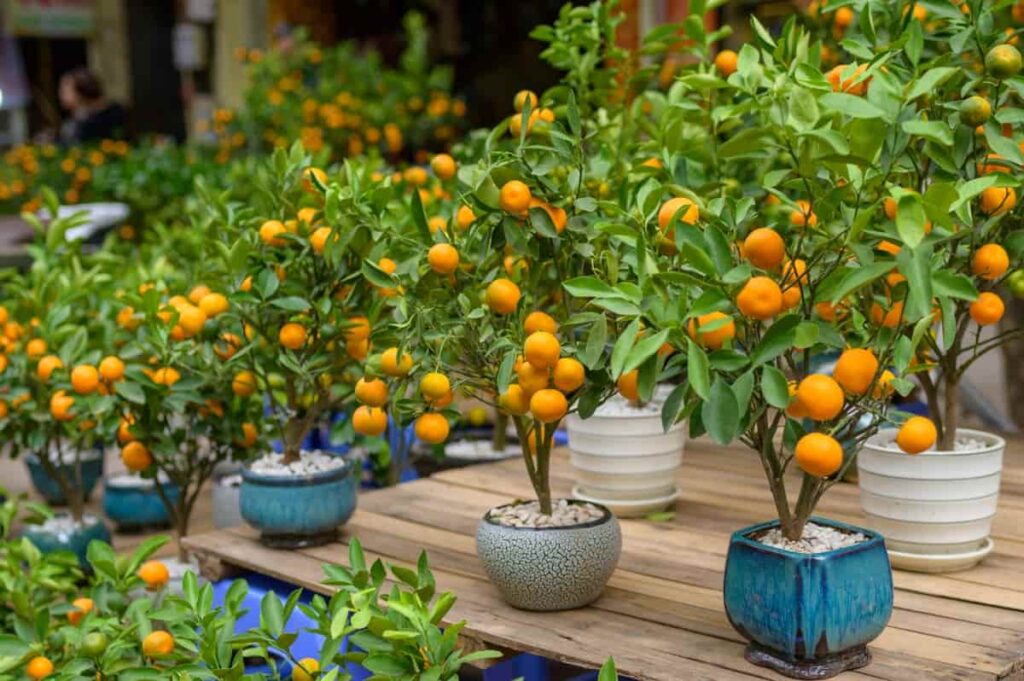Potted plants bring nature’s beauty indoors, adding beauty and freshness to any space. Potted trees are also known for their ability to increase humidity indoors, which can be beneficial, especially during dry seasons or in areas with low moisture levels. Understanding why your potted tree is not fruiting is the first step toward finding a solution.

10 Reasons Why Your Potted Tree is Not Fruiting
Insufficient Sunlight
Assessing Sunlight Requirements for Fruit Production
Assessing the sunlight requirements for fruit production is crucial in ensuring a bountiful harvest from your container plants. Different fruit trees have varying sunlight needs, so it’s essential to know the specific requirements of your plant. By observing how much sunlight your tree gets throughout the day, you can determine if it’s getting enough light to support fruiting.
Providing Supplementary Light Sources
Assess your plant’s sunlight needs and consider supplementing with grow lights. LED grow lights are energy-efficient options that mimic the sun’s spectrum. Placing grow lights strategically above your tree can ensure all parts receive adequate illumination, promoting healthy growth and fruit development. Remember to adjust the duration of light exposure based on your specific plant species requirements.
Improper Pollination
Understanding Pollination Needs of Potted Plants
Pollination is a crucial factor in the fruiting process of potted plants. Understanding the pollination needs of your potted trees can significantly impact their ability to bear fruit. By taking an active role in ensuring proper pollination for your potted trees, you are setting them up for fruitful success down the line.
Hand Pollination Techniques
In indoor environments, where natural pollinators may be scarce, hand pollination techniques can come to the rescue. By gently transferring pollen from one flower to another using a brush or cotton swab, you can mimic the role of insects. Observing your plant’s flowering patterns and timing your hand pollination efforts accordingly is key to success. Some plants may require multiple attempts for effective fertilization, so patience is essential.
Nutrient Deficiencies
Identifying Key Nutrients for Fruit Development
Nutrient deficiencies might be the sneaky culprits behind their lackluster performance. Identifying the key nutrients essential for fruit development is crucial in addressing this issue. By customizing your fertilizer regimen to meet the unique needs of your potted trees, you can provide them with the necessary resources to thrive and bear fruits abundantly.
Adjusting Fertilization Practices
Adjusting your fertilization practices can make a world of difference in boosting fruit production. Potassium, phosphorus, and nitrogen are vital nutrients that play a significant role in encouraging healthy fruit growth. Make soil tests to determine which specific nutrients your plants may be lacking.
Pot Size and Root Bound Conditions
Evaluating Root Space and Pot Size
Evaluate the root space available for your plant – if the roots are crowded and circling the container, it might be time for a bigger pot. Choosing the right size of a pot is essential as it directly impacts the plant’s ability to thrive and bear fruits. A larger pot allows for better nutrient uptake, water retention, and overall plant health.
Repotting Strategies for Enhanced Fruit Production
Repotting can provide more room for healthy root growth and ultimately enhance fruit production. When repotting your tree, ensure you use a high-quality soil mix suitable for fruit-bearing plants. This will provide adequate drainage and aeration, preventing issues like waterlogging or compacted roots that can hinder fruit development.
In case you missed it: 10 Reasons Why Your Tree is Not Producing Fruit: Remedies and Treatment

Pest and Disease Infestations
Common Pests and Diseases Affecting Fruit Set
Pests and diseases can be a real problem when it comes to your potted tree’s fruiting potential. Those sneaky critters and unwelcome illnesses can put a damper on your harvest dreams. Common pests like aphids, spider mites, and whiteflies can wreak havoc on your plant’s ability to set fruit. Diseases like powdery mildew can also hinder fruit production by weakening the overall health of the plant.
Implementing Integrated Pest Management (IPM) Techniques
Implementing Integrated Pest Management (IPM) techniques is key here. This approach focuses on prevention first, using natural predators or organic solutions before resorting to harsh chemicals. Prevention is always better than cure when it comes to maintaining a healthy environment for your potted tree to thrive and bear fruits abundantly.
Temperature and Humidity Control
Maintaining Optimal Temperature and Humidity Levels
Temperature and humidity play a main role in the fruiting process of potted trees. Maintaining optimal levels is key to ensuring healthy growth and fruit production. Humidity levels also impact fruit development. Too much moisture can affect issues like mold, while low humidity can cause dehydration in plants. Finding the right balance is essential.
Protecting Plants from Temperature Extremes
Extreme temperatures can stress plants, affecting their ability to set fruits. It’s important to shield your potted tree from temperature swings by placing it in a suitable location. Consider using tools like thermometers and hygrometers to monitor conditions accurately. Providing adequate ventilation can help regulate temperature and humidity for your potted tree’s benefit.
Pollinator Attraction
Encouraging Pollinator Presence in Indoor Environments
In indoor environments, it can be challenging for natural pollinators like bees and butterflies to reach your plants. However, there are ways to encourage their presence even indoors. Creating a pollinator-friendly space in your home can make a big difference. Choose plants that attract pollinators, such as lavender or mint, and place them near your fruit-bearing tree. By taking steps to promote pollinator activity indoors, you increase the chances of successful fruit development on your container plants.
Creating Pollinator-Friendly Spaces
Creating pollinator-friendly spaces in your indoor environment is essential for the health and vitality of your potted tree. Choose a variety of plants to provide a continuous food source for pollinators throughout the year. Avoid using pesticides in your indoor garden, as they can harm pollinators and disrupt their natural behavior. Instead, choose organic pest control methods like neem oil to protect your fruit plants without harming beneficial insects.
Soil Conditions
Soil pH and Composition for Fruit Bearing
Ensuring the right soil conditions for your potted tree is crucial for promoting fruit production. Start by checking the soil pH levels, as different fruits thrive in varying acidity levels. Adjusting the pH can make a significant difference in fruit development. In addition to pH, consider the composition of your soil.
Ensuring Adequate Soil Drainage and Aeration
Adequate drainage and aeration are also key factors to keep in mind when it comes to promoting healthy fruit-bearing plants. Waterlogged roots can be affected by root rot and hinder nutrient uptake, ultimately affecting fruit production. Optimizing soil conditions may require some adjustments, but it will be well worth it once you start seeing those delicious fruits flourishing on your potted tree.
Stress from Environmental Factors
Mitigating Environmental Stressors Impacting Fruit Set
Changes in temperature, humidity levels, or even drafts can impact their ability to produce fruits. To mitigate these stressors, it’s crucial to provide consistent care and attention. Monitor the environment where your potted tree is placed – ensure it’s not too hot or too cold for optimal growth. Regularly check the humidity levels to maintain a comfortable atmosphere for your plant.
Providing Consistent Care and Attention
Consistency is key to caring for your potted tree. Stick to a watering schedule that suits your plant’s needs, and pay attention to any signs of distress it might show. By providing a stable environment and unwavering care, you can help your potted tree overcome environmental stressors and boost its fruit production potential.
In case you missed it: 10 Reasons Why Your Tree is Not Producing Fruit: Remedies and Treatment

Plant Age and Maturity
Understanding Fruit Development Stages
Understanding the stages of fruit development is crucial for a fruitful harvest. Young plants may not bear fruit as they are still establishing their root systems and growth patterns. It’s important to be patient as some trees can take several years before producing fruits. As your plant matures, you’ll start noticing changes in its growth patterns, which could indicate that it’s entering the fruiting stage. Proper care and maintenance during this stage are essential to support healthy fruit development.
Allowing Sufficient Time for Fruit Maturation
Each plant has its timeline for fruit maturation, so don’t rush the process. Be observant and learn to recognize the signs of readiness in your fruits – color changes, firmness, and aroma are all indicators. Take pleasure in witnessing your potted tree evolve from a tiny sapling into a bountiful fruit-bearing specimen.
In case you missed it: Top 10 Homemade Sprays for Stink Bugs: DIY Organic Treatment for Getting Rid of Stink Bugs

Conclusion
Potted trees not only add a touch of greenery and beauty to your indoor space but also come with a host of benefits that can enhance your overall well-being. Non-fruiting container plants can be a common issue for many gardeners, but fear not; there are solutions to explore. Understanding why your potted trees are not fruiting and implementing appropriate remedies can help enhance fruit production in container plants. There are several ways to troubleshoot fruitlessness in your container plants.
- Crops Grown in Summer Season: Best Choices for Summer Gardening
- Organic Pest Control for Tomato Farming
- How to Maximize Sheep Farming Profit
- Broccoli Varieties: Choosing the Right Cultivars for Your Farm
- How to Raise Pigs in Your Own Backyard: A Comprehensive Guide
- Budget Friendly Sheep Shed Ideas: Cheap and Low-Cost Tips
- How Much Do Cattle Farmers Make: Revenue Streams in Cattle Farming
- Management Pests and Diseases in Your Cotton Field
- Sheep Farming Business Plan for Beginners
